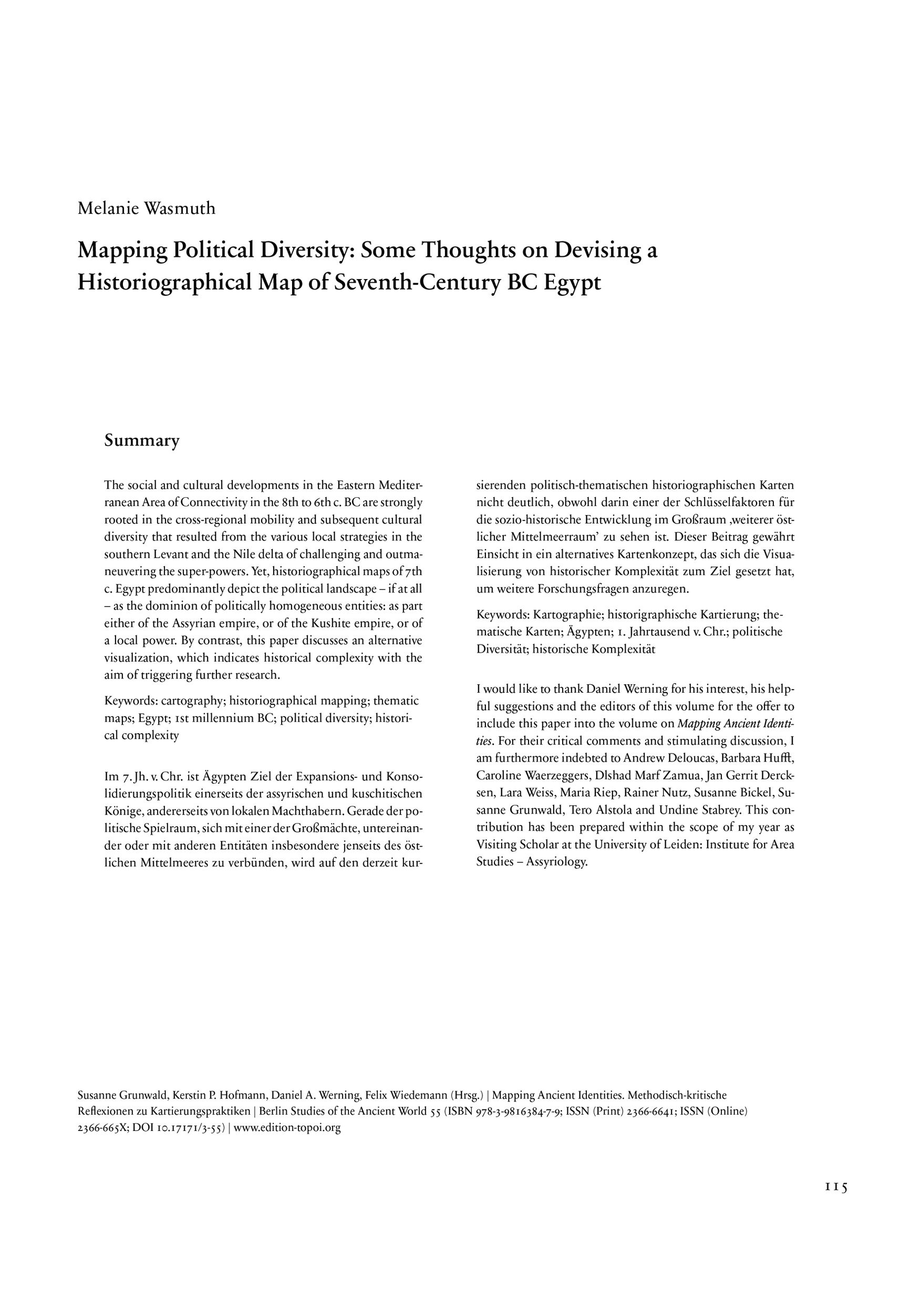Mapping Political Diversity
Some Thoughts on Devising a Historiographical Map of Seventh-Century BC Egypt
The social and cultural developments in the Eastern Mediterranean Area of Connectivity in the 8th to 6th c. BC are strongly rooted in the cross-regional mobility and subsequent cultural diversity that resulted from the various local strategies in the southern Levant and the Nile delta of challenging and outmaneuvering the super-powers. Yet, historiographical maps of 7thc. Egypt predominantly depict the political landscape – if at all– as the dominion of politically homogeneous entities: as part either of the Assyrian empire, or of the Kushite empire, or of a local power. By contrast, this paper discusses an alternative visualization, which indicates historical complexity with the aim of triggering further research.
Im 7. Jh. v. Chr. ist Ägypten Ziel der Expansions- und Konsolidierungspolitik einerseits der assyrischen und kuschitischen Könige, andererseits von lokalen Machthabern. Gerade der politische Spielraum, sich mit einer der Großmächte, untereinander oder mit anderen Entitäten insbesondere jenseits des östlichen Mittelmeeres zu verbünden, wird auf den derzeit kursierenden politisch-thematischen historiographischen Karten nicht deutlich, obwohl darin einer der Schlüsselfaktoren für die sozio-historische Entwicklung im Großraum ‚weiterer östlicher Mittelmeerraum’ zu sehen ist. Dieser Beitrag gewährt Einsicht in ein alternatives Kartenkonzept, das sich die Visualisierung von historischer Komplexität zum Ziel gesetzt hat, um weitere Forschungsfragen anzuregen.

